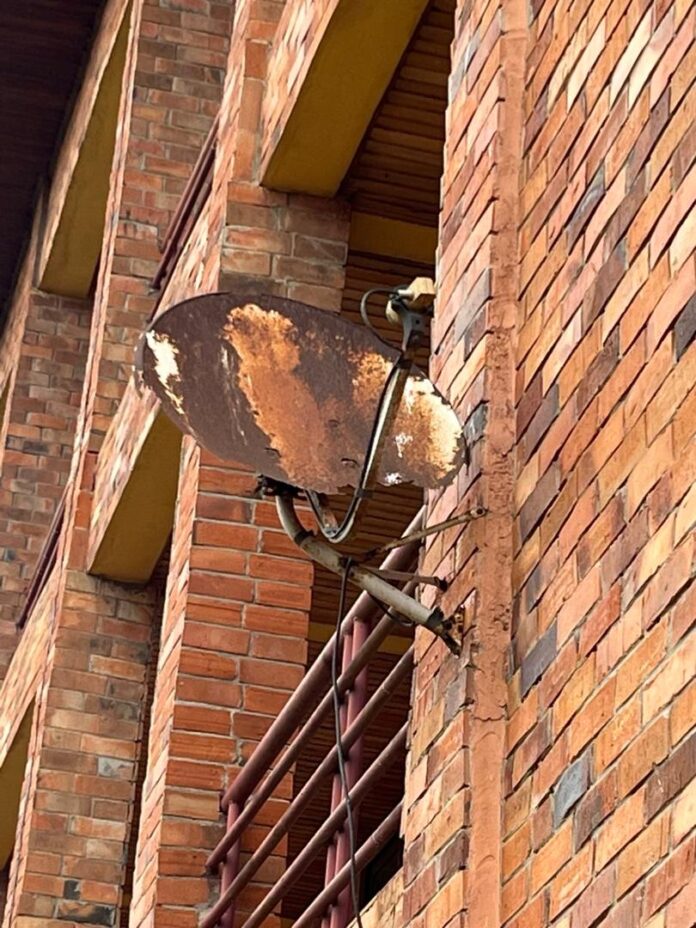A nationwide inspection of GN Bank branches by Today Newspaper, reveals widespread neglect, largely attributed to the actions—or inaction—of Receiver, Eric Nana Nipah.
His failure to maintain or secure the properties has led to the rapid deterioration of many of the bank’s assets, leaving the once-thriving facilities in a state of disrepair and decay.
GN Bank was among the financial institutions controversially collapsed under the Nana Akufo-Addo administration, in what many describe as through, a capricious and opaque process.
Although the bank’s owners and shareholders are still in court challenging the revocation of its licence, Eric Nipa has passively watched as the bank’s properties fall into ruins. Many of these once-functional facilities have been abandoned, converted into shelters for the
homeless and hideouts for miscreants, with others looted—marking a troubling chapter in the aftermath of Ghana’s financial sector cleanup.
The Decay and Costly Neglect of GN Bank Properties
The outward compounds of most GN Bank facilities have suffered severe deterioration, with crumbling floors and weakened structures—clear signs of years without maintenance.
The paper’s inspection of some of the locations revealed a disturbing pattern of decay: once-vibrant branches are destroyed; ceilings have collapsed, walls are riddled with deep cracks, and the structures show clear signs of long-term neglect and abandonment.
In the Central Region, branches in Mankessim, Biriwa, Cape Coast, Elmina, and others have shattered windows and stolen louvre blades, providing open access to squatters and vagrants.
At the Biriwa branch, for example, a man identified as Abeka was found comfortably settled inside, his belongings neatly arranged as he enjoyed the breeze drifting through the broken windows—an eerie reflection of the institution’s downfall.
This grim reality is echoed across the Western, Western North, Ashanti, Brong Ahafo, Eastern, Volta, Oti, Northern, and Upper Regions. Many of these once-bustling bank buildings have become virtually unrecognizable, now engulfed by overgrown weeds and bushes.
Some locations are so neglected that even former staff and owners struggle to identify them. A typical example is the GN Bank branch along the Kasoa–Cape Coast highway, near Potsin Junction.
. GN Bank and the Betrayal of Financial Inclusivity
GN Bank was at the forefront of financial inclusion in Ghana, pioneering a model that brought banking services to the very doorsteps of ordinary citizens—especially in rural and underserved communities long neglected by mainstream high-street banks.
Through its innovative outreach, areas like Dzemeni in the Volta Region, Gambaga in the Northern Region, Asesewa in the Eastern Region, Tumu, Jirapa, Lawra, Nandom, and Hamile in the Upper West Region, as well as Zebilla and Bawku in the Upper East, experienced formal banking services for the first time. GN Bank’s vast branch network made this possible.
The bank also played a significant role in easing access to remittances. Ghanaians abroad could send money home, and their loved ones could conveniently receive it—thanks to the near-ubiquitous presence of GN Bank branches across the country.
However, on June 14, 2019, the Bank of Ghana revoked the licence of GN Bank—by then downgraded to a Savings and Loans company—citing significant regulatory breaches as the reason for the action.
This claim has been strongly refuted by Dr. Papa Kwesi Nduom, a key stakeholder in the bank. According to him, the “GN Savings and Loans Transition Report” showed that the bank had sufficient funds in its accounts at the time of the revocation—contrary to the Bank of Ghana’s assertions.
source: https://www.todaygh.com/





